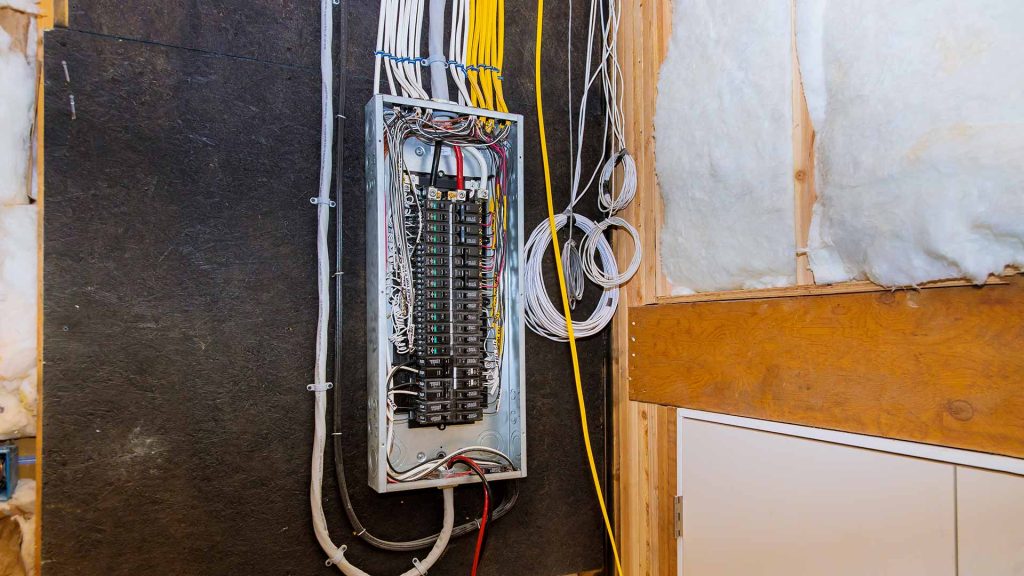10 Critical Warning Signs of Faulty Electrical Wiring and How to Address Them

Electricity is the backbone of our modern homes, powering everything from lights to appliances. But what happens when something goes wrong? Faulty electrical wiring is a common issue that can lead to severe consequences, including fires, electrocution, and significant property damage. Identifying the warning signs early can save you from potential disasters.
In this guide, we’ll explore ten critical warning signs of faulty electrical wiring that you need to watch out for. We’ll also provide practical advice on how to address these issues to ensure your home remains safe.
1. Frequent Circuit Breaker Trips
If your circuit breaker trips often, it’s a sign that your electrical system is overloaded or that there’s a short circuit. While it may seem like a minor inconvenience, frequent tripping can indicate a more serious underlying issue.
Solution:
Consult with an electrician to assess your system’s capacity and identify any faulty wiring or appliances that may be causing the overload.
2. Flickering or Dimming Lights
Flickering lights can be a sign of loose wiring or an overloaded circuit. If multiple lights flicker when you turn on an appliance, your electrical system might be struggling to supply power.
Solution:
Check the connections in your light fixtures and, if the problem persists, have an electrician inspect your wiring for potential issues.
3. Burning Smell or Discolored Outlets
A burning smell near outlets or switches is a serious red flag. It could indicate that the wiring is overheating, which may lead to an electrical fire. Discolored or charred outlets are also signs of heat damage.
Solution:
Immediately turn off the power to the affected area and contact a licensed electrician to inspect and replace any damaged wiring.
4. Buzzing Sounds from Outlets or Switches
Electrical systems should operate silently. If you hear buzzing or crackling sounds coming from outlets or switches, it could be due to loose connections, faulty wiring, or damaged components.
Solution:
Stop using the affected outlet or switch and have an electrician examine the issue to prevent potential hazards.
5. Hot or Warm Wall Plates
Wall plates that feel hot or warm to the touch can indicate that the electrical wiring behind them is overheating. This could be due to an overloaded circuit or poor insulation.
Solution:
Turn off the power to the outlet and have an electrician assess the wiring to determine if it needs to be upgraded or replaced.
6. Sparking Outlets
Sparks from an outlet are a sign that something is wrong, whether it’s faulty wiring, a short circuit, or a loose connection. Ignoring this warning can lead to electrical fires.
Solution:
Unplug any devices connected to the outlet and avoid using it until a professional has inspected and repaired the wiring.
7. Frequently Blown Fuses
If you’re constantly replacing blown fuses, it could be a sign that your electrical system is outdated or struggling to handle the load. This is especially common in older homes.
Solution:
Consider upgrading your electrical panel and wiring to handle the demands of modern appliances and technology.
8. Unusual Odors
Unusual odors, especially those that smell like burning plastic or rubber, can indicate overheating electrical components. This could be due to overloaded circuits or damaged insulation.
Solution:
Turn off the power in the area where the smell is coming from and seek the help of an electrician to diagnose and fix the problem.
9. Unexplained Electrical Shocks
Receiving a mild shock when touching an appliance or outlet is not normal and can be a sign of faulty wiring or grounding issues. This could pose a serious risk of electrocution.
Solution:
Stop using the affected appliance or outlet and have an electrician inspect the wiring and grounding to ensure safety.
10. Outdated or Aluminum Wiring
Homes built before the 1970s may have aluminum wiring, which is prone to oxidation and corrosion, leading to potential fire hazards. If your home has outdated wiring, it’s crucial to consider an upgrade.
Solution:
Have a licensed electrician inspect your home’s wiring and discuss options for upgrading to safer, more modern materials like copper.
Conclusion
Faulty electrical wiring is not something to take lightly. Recognizing the signs early can help you prevent potentially catastrophic events, such as electrical fires or electrocution. If you notice any of the warning signs mentioned above, it’s essential to consult with a licensed electrician as soon as possible to assess and resolve the issues. Your safety and the safety of your home depend on it.
FAQs
1. What are the common causes of faulty electrical wiring?
Common causes include aging wiring, improper installation, and overloading circuits with too many appliances.
2. How often should I have my electrical wiring inspected?
It’s recommended to have your wiring inspected every 3-5 years, or immediately if you notice any warning signs.
3. Can I fix electrical wiring issues myself?
Electrical work can be dangerous and should be handled by a licensed professional to ensure safety and compliance with local codes.
4. How do I know if my home’s wiring is outdated?
Signs of outdated wiring include frequent blown fuses, dimming lights, and the presence of aluminum wiring, which was commonly used before the 1970s.
5. Is flickering lights always a sign of faulty wiring?
Not always. Flickering can be caused by loose bulbs or faulty light fixtures, but if the issue persists, it’s best to have your wiring checked.
